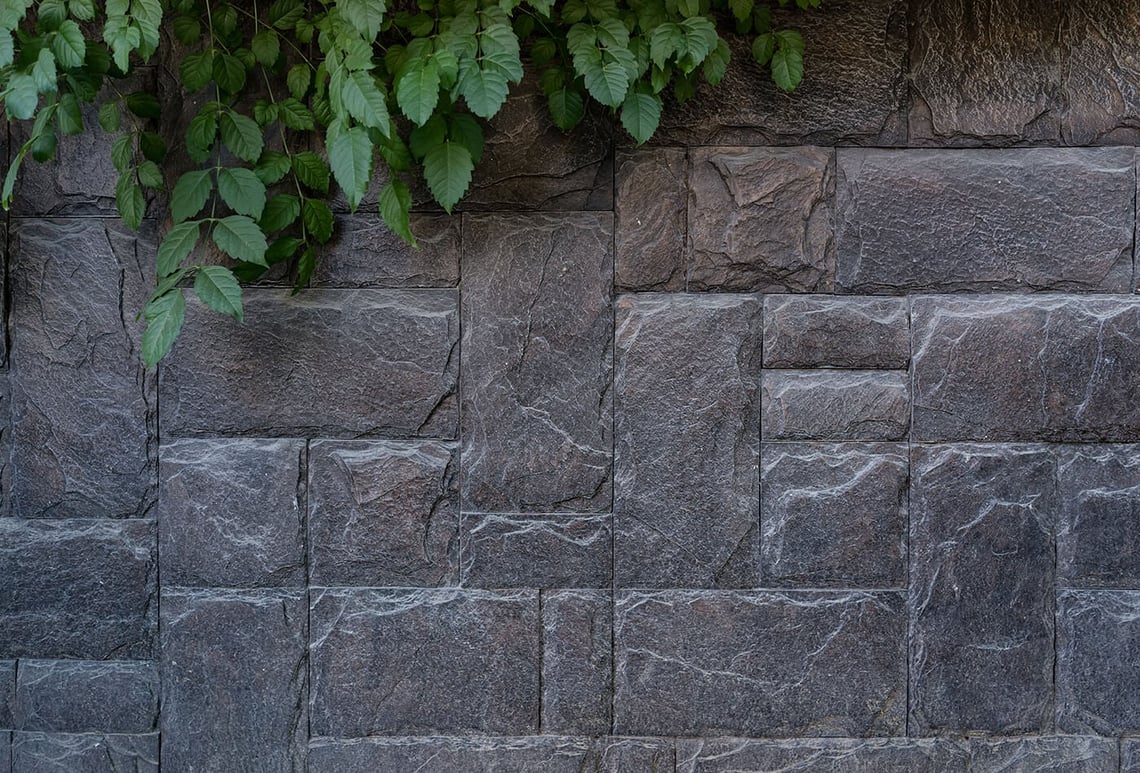Slate is a form of stone that formerly was hidden underneath the earth's crust as a fine-grained metamorphic rock, a rough derivation of sedimentary rock composed of clay or volcanic ash. It is characterised by its distinct foliated structure, which means it has a tendency to split into thin, flat sheets. They are simple grey, black and darker shades than usual. These Slates are ideally mined, cleaned and curated into thin slabs or sheets that can be used for various purposes. Slate is commonly used in construction, roofing, flooring, and as a material for writing surfaces (such as Slate Chalkboard). Here is your awaited grey slate, its benefits, history, origin and applications.
Grey Slate Stone
Slate stones are often grey due to the presence of certain minerals and the geological processes that lead to their formation. The colour of the slate is influenced by the minerals present in the original sedimentary rock and the metamorphic changes it undergoes. The most common minerals found in slate contribute to its grey colour.
Reason For The Slate's Grey Colour
Clay Minerals: The original sedimentary rocks from which slate stones are formed contain minerals like mica, quartz, muscovite or chlorite. Exceptionally, Illite will be the source of the grey shades. Mostly, the grey colour in the slate is merged with other brighter hues like green and white, giving a dulled greyish-green or greyish-white colour. These minerals contribute to the grey slates and may give it a smooth, fine-grained texture.
Carbonaceous Materials: Organic materials, such as plant debris or other organic matter, can also be present in the sedimentary rock precursor to slate. As these materials undergo metamorphism, they can contribute to slate's grey or black colouration.
Iron and Other Trace Minerals: Trace minerals, including iron, can impact various colours to slate. In the case of grey slate, the presence of iron in specific oxidation states may result in the Grey hues.
It's worth noting that while grey is a standard colour for Slate stones, they also come in a range of peculiar colours, including green, black, purple, and red, depending on the geographic situation, composition and geological conditions during their formation. The prevalence of grey slate may be due to the widespread distribution of the minerals responsible for this colour in many slate deposits.
Grey slate, a versatile and elegant natural stone, has a rich history and many applications in various fields. This unique material has stood the test of time, offering aesthetic appeal and practical advantages from roofing to flooring. This exploration delves into the history, benefits, origin, and diverse applications of grey slate.
History

The use of slate dates back centuries, with evidence of its applications in roofing and writing surfaces in ancient times. Grey slate, in particular, has favoured homeowners of this period and back then for its understated beauty and timeless appeal. Throughout history, it has adorned the roofs of castles, cathedrals, and manor houses, showcasing its durability and ability to withstand the elements.
Origin

Grey slate is a natural rock that is scouted from various quarries of the world, each contributing to the unique characteristics of the stone. Notably, regions like Vermont in the United States, Wales in the United Kingdom, and parts of Spain have good traces of slate stones. The combination of geological compositions of these areas contributes to its ashy grey shades and distinctive patterns in any slate.
In Wales, the Penrhyn Quarry has been a historic source of high-quality greyish slate slabs. It is definitely a sought-after material for buildings, architecture, worktops, wall claddings, fireplaces, and many other applications.
Benefits
One of the primary benefits of slate lies in its exceptional durability. It can be used outdoors because of its excellent durability. It is resistant to weathering, dulling and chemical exposure, making it a long-lasting material for various spaces.
These slabs are easy to maintain; minimal care like wiping and cleaning with soapy liquid is required to sustain them for many years. Non-porous surface inhibits the growth of moss and algae, reducing the need for regular cleaning.
Slate materials are fortunate for fireplace sides because they are excellent fire-resistant, providing an added layer of safety for structures. This quality has contributed to its use in fireside mantles, hearths, and chimney walls. Ancients used slate as a fireproof roofing.
Its monochromatic ashy-grey combination exudes a timeless elegance that complements traditional, modern and contemporary architectural styles. Its smooth, matt finish adds a touch of posh to any entity.
Grey slate is a natural material that doesn't undergo extensive processing or in need of any harmful chemicals. Its long lifespan also reduces the need for frequent replacements, making it an eco-friendly choice.
Applications

Slat in grey has been a traditional roofing material for centuries, prized for its durability and natural beauty. Its use in roofing not only provides a protective barrier against the elements but also imparts a distinctive aesthetic to structures.
Floors made of slate are a popular choice for high-traffic areas and interior and exterior spaces. Its cool, neutral tones create a contemporary look, and its durability makes it suitable for flooring.
Grey is a tranquil hue utilised as wall cladding indoors and outdoors. Whether covering entire accents or creating a focal wall feature, slate adds texture and visual interest to architectural designs.
Slate countertops and vanity tops offer a unique alternative to traditional materials in kitchens and bathrooms. The stone's resistance to heat and stains makes it a practical choice for these spaces.
Grey slate increases the aesthetic value when used for landscape decoration. It can be used for pathways, patios, and garden features. Its natural appearance harmonises with outdoor environments, and its durability ensures longevity in various weather conditions.
Slate is also employed in artistic and decorative applications. Its malleability allows for creative expressions in art and design, from sculptures to engraved plaques.
Conclusion
In conclusion, grey slate is a testament to natural materials' enduring appeal. Its history, benefits, origin and diverse applications showcase its versatility and timeless beauty. Whether gracing the roofs of historic structures or enhancing contemporary interiors, grey slate continues to captivate with its understated elegance and practical advantages.




